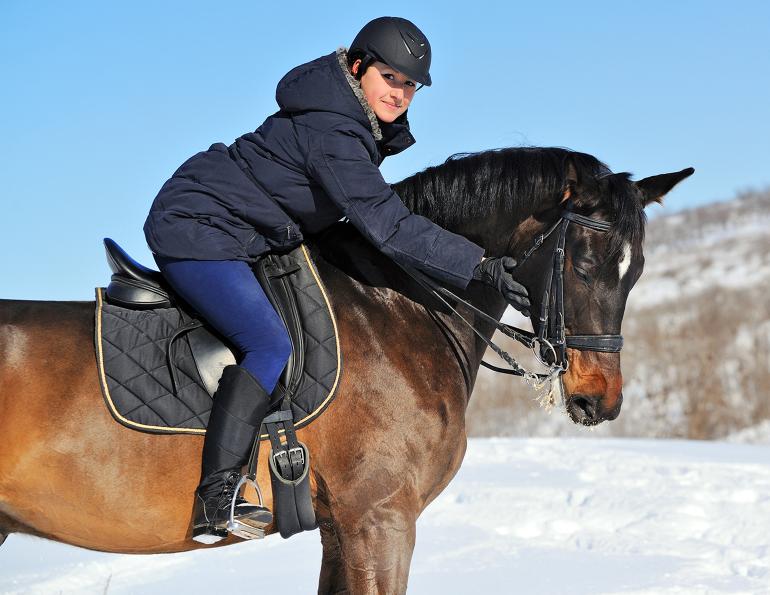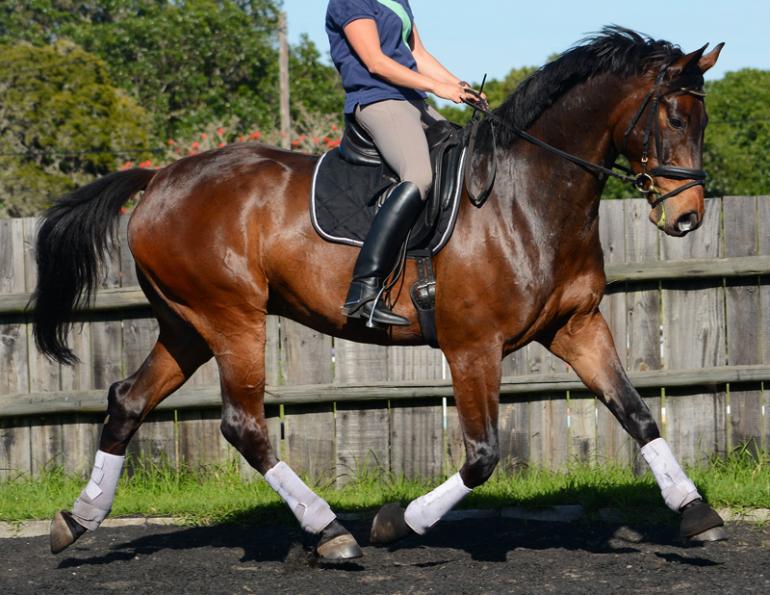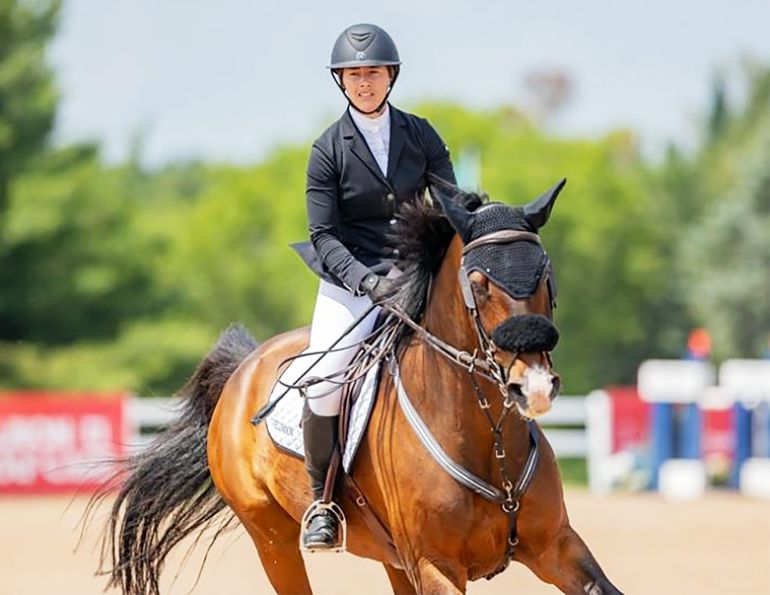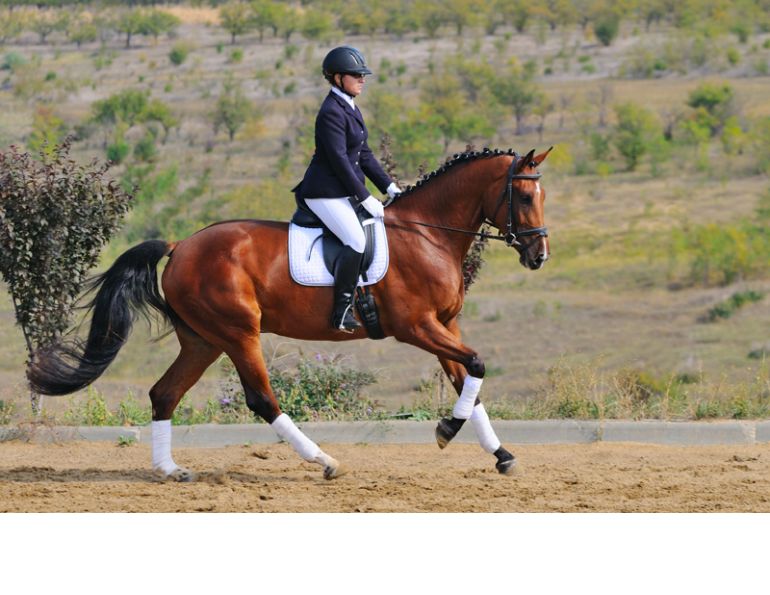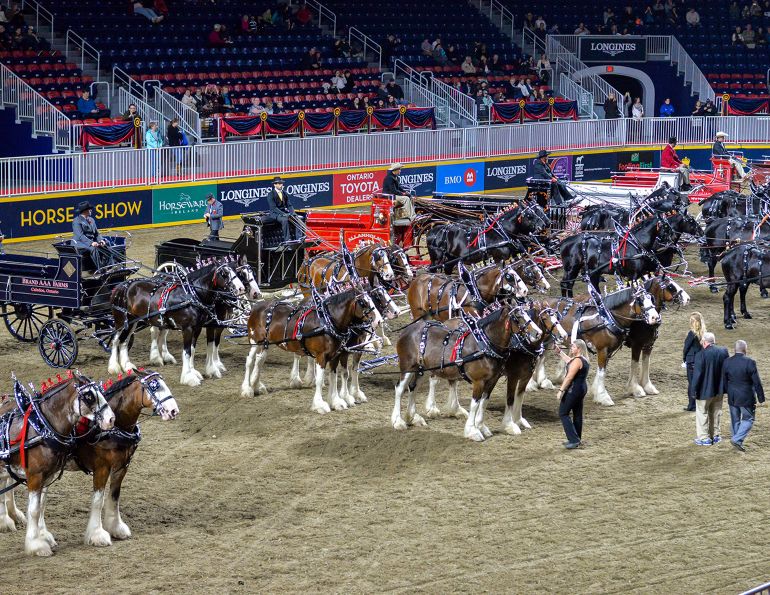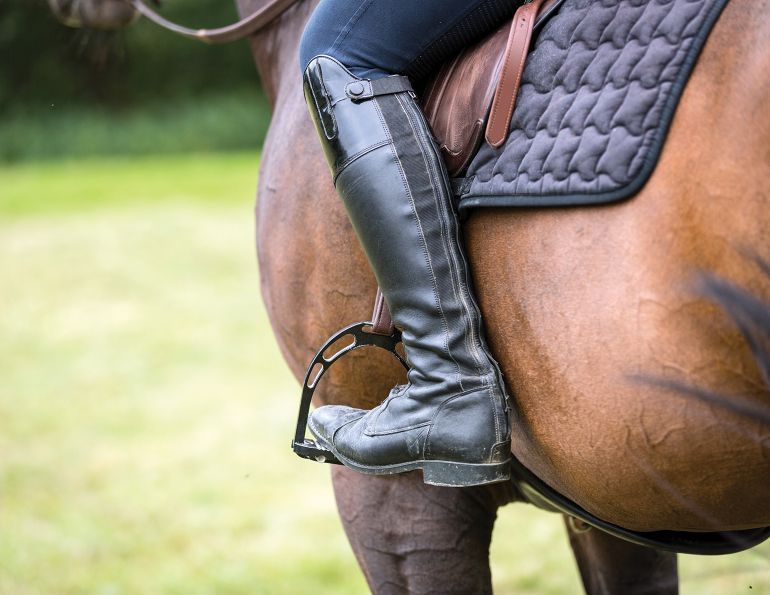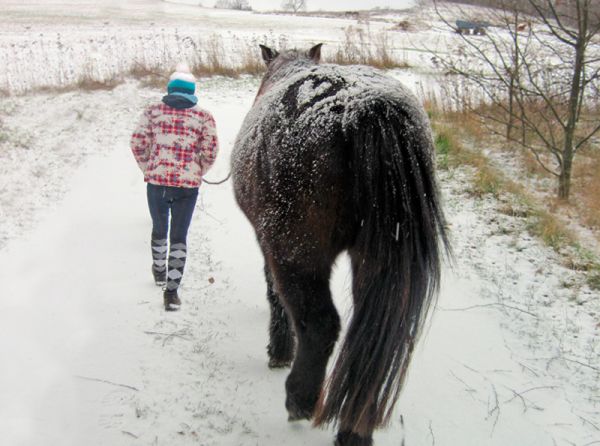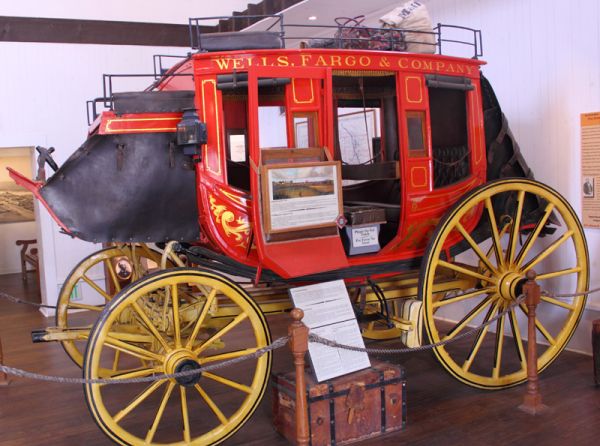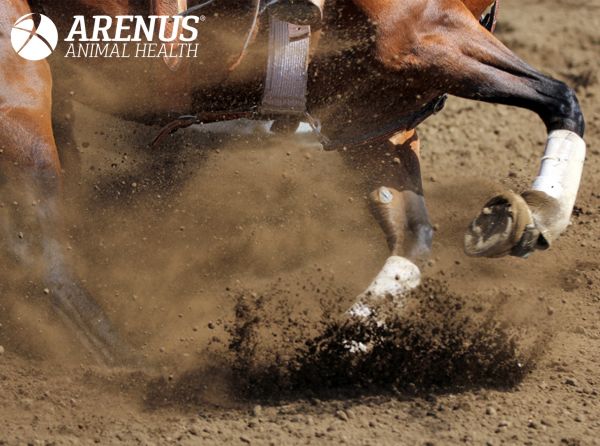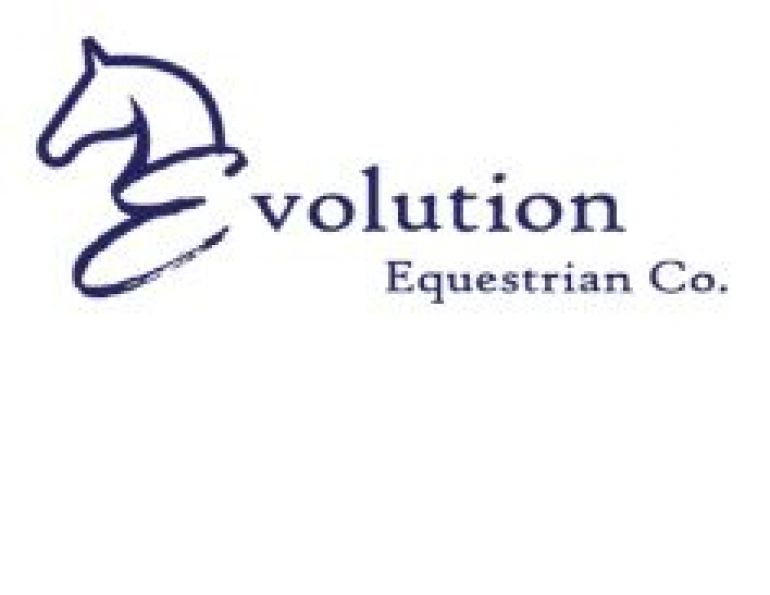With Liz Ashton
By Jess Hallas-Kilcoyne
If your horse seems reluctant to go forward, if his body feels rigid and unyielding to your aids, if his jumping style is flat or hollow, your horse may be in need of some suppling. But at least you’re not alone – the stiff horse is one of the most common rider complaints out there.
A horse’s stiffness not only makes for a rather unpleasant ride, but also significantly limits his athletic performance.
“Think of a horse in four parts: the head and neck, the shoulder, the rib, and the hindquarter,” suggests Liz Ashton, a two-time Olympian eventer. “Many horses get ‘blocked’ somewhere in their bodies; this can manifest itself as stiffness in the mouth, in the shoulder, or in the rib cage or back. To achieve suppleness, it’s really important that you be able to work through these blocks so the horse can move all parts of the body in a relaxed and elastic manner.”
Suppleness is the antithesis of stiffness, referring to the ability of the horse to comfortably bend longitudinally (back to front) and laterally (side to side) in response to the rider’s aids, while maintaining elasticity and relaxation. Besides making for a more enjoyable ride, this softness and flexibility is critical for success in any discipline, including jumping.
“Longitudinal suppleness is imperative to a horse being able to bascule over a jump and therefore get more elevation,” says Liz. She notes that lateral suppleness is equally important for a jumping horse. “If a horse isn’t supple, there’s no way he is ever going to be fast in jump-offs because he’s not bending around the turns.”
Incorporating traditional flatwork exercises for developing suppleness, such as serpentines, circles, and leg-yield, into your jumping sessions will improve the flexibility and strength of your horse and help him use his body more effectively over fences. Following are three of Liz’s favourite suppleness exercises for jumping horses; as you school these exercises, you should feel the horse become lighter in your hand, more elastic in the body, and more balanced in the carriage.
Related: Half-Halt for Rhythm and Balance
Exercise #1: Serpentine Over Jumps
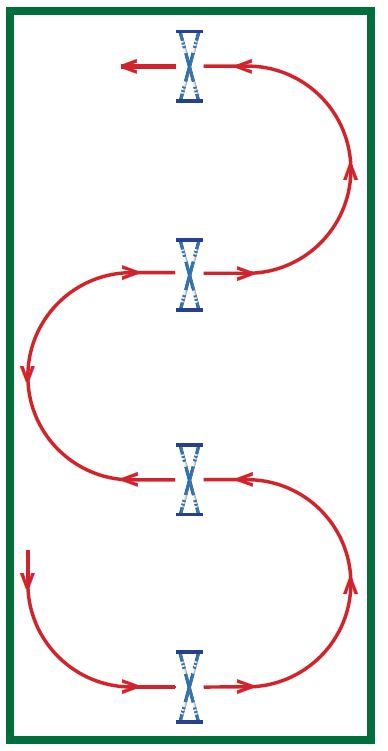
Place four jumps (set fairly low to start) equally spaced down the centreline of the ring, with the poles parallel to the long sides of the ring, and proceed in trot or canter to ride a three loop serpentine over the jumps. You can ride another serpentine back down the length of the arena, or ride large down the long side and re-enter the exercise at your original starting jump.
The difficulty of this exercise is in choosing your track to the jumps. “The exercise should be executed as half-circles followed by a straight line over the jumps,” Liz specifies. “Bend the horse around your inside leg going into the turn and straighten with your outside leg and rein coming out of the turn.”
If you find that you are overshooting the line to the jump, Liz advises early use of the eyes, and riding a more inside track to the fence. Other common rider mistakes may include loss of rhythm, or allowing the horse to fall in on the turns. To fix these problems, Liz suggests that you “make a circle at the end of the serpentine loop before going on to the next element of the exercise. This will help to correct the track and re-establish balance.”
When you find this exercise has become easy to ride, you can increase the difficulty by raising the jumps, riding shallower serpentine loops, or spacing the jumps closer together so the turns are tighter.
Related: The Long Cavesson
Exercise #2: Jumping on a Circle
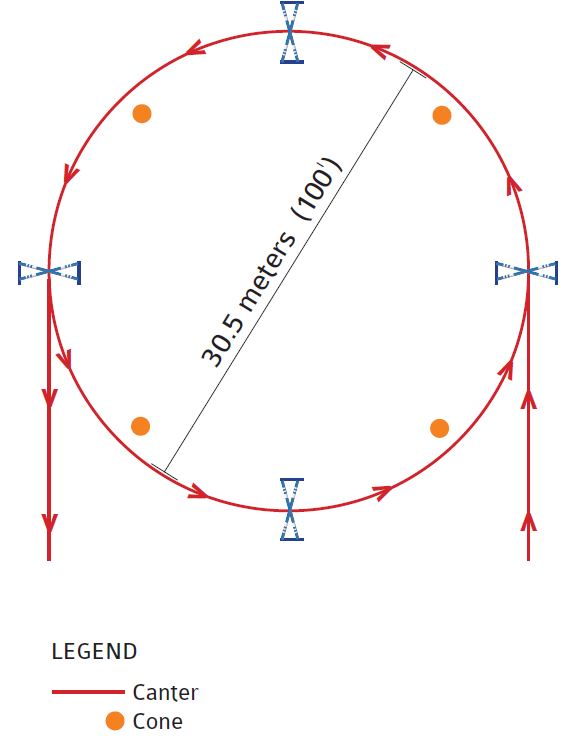
Place four jumps equally spaced around a circle. To start, set the jumps as cross-rails and make the circle as large as possible (about 100 feet in diameter if you can manage). Enter the circle in canter from the long side of the arena and ride over seven jumps, ensuring that your circle remains symmetrical and aiming to ride an equal number of canter strides between each of the jumps, then exit the circle on the side opposite your starting jump. Repeat the exercise in the other direction.
If you have difficulty maintaining a symmetrical circle over the jumps, place cones between the jumps to the inside of the track you want to ride. This will help you stay on your chosen track. It's also important that you enter the circle having already built the correct pace for the exercise. “Start the canter well back from the circle to ensure that you have a quality canter to start with,” says Liz. “Count the rhythm out loud and continue to count all the way around the circle.” If your horse experiences a loss of balance, pull out of the circle, regroup, and start over again.
You can increase the difficulty of the exercise by decreasing the size of the circle, raising the jumps, and adding or leaving out a stride between the jumps.
Related: Adjust Your Horse's Stride with Gymnastic Jumping Exercises
Exercise #3: Half-circle, Jump, & Leg Yield

After establishing a balanced, active working trot on the right rein, turn in off the rail along the long side of the arena and ride a half-circle, approximately 10 metres in diameter, to a low cross-rail. Ride over the jump and immediately upon landing (in left lead canter) ask for three or four strides of leg-yield to the right.
This can be a challenging exercise because it requires that you have good flexion and bending to the right during the half-turn to the jump and flexion to the left after the jump. It also requires that the horse establish left lead canter on the landing side of the cross-rail. In the half-circle, your right leg at the girth and slightly opening right inside rein create bend and flexion to the inside. Your outside (left) leg and rein support the horse’s hindquarters and shoulders, keeping them on the track.
When you choose your track for the half-circle, give yourself enough room to ride straight for a stride or two before the jump. Use these strides to really balance your horse and ask for a slight flexion to the left, which will encourage him to land on the left canter lead. If the horse lands on the right lead, half-halt and ride a flying change to the left. If he is not schooled in flying changes, ride a change of lead through trot.
Throughout the leg-yield to the right, the horse should maintain straightness in his body, leading with neither his forehand or hindquarters, and slight flexion to the left. If he becomes unbalanced or resistant, ride a small circle to re-establish suppleness and balance then ask for a few more steps of leg-yield. You need not leg-yield all the way back to the track; three to four correct strides in leg-yield are sufficient.
As you become more practiced at this exercise, you may raise the jump as dictated by your skill level. Repeat the exercise on the opposite rein.
Related: Straighten Your Horse for a Safer Ride Over Fences
Related: Jumping Your Horse with Contact
About Liz Ashton
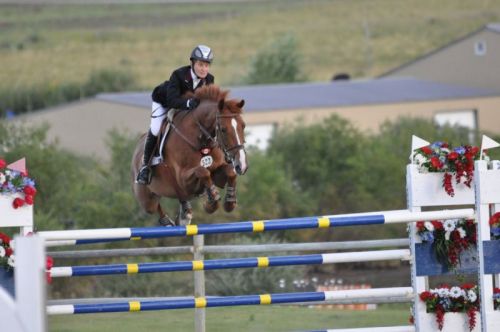
Liz Ashton was inducted into the Canadian Eventing Hall of Fame in 2009 in recognition of her accomplishments as a member of three Canadian Olympic Teams, a Team Silver medalist at the 1975 Pan American Games, and a Team Gold medalist at the 1978 World Championships. Liz owns and operates EqSport, an equestrian training, coaching, and sport consulting business based in Victoria, BC, and currently competes in show jumping competitions throughout Western Canada, the northwestern United States, and California.
Main Photo: Jess Hallas-Kilcoyne



